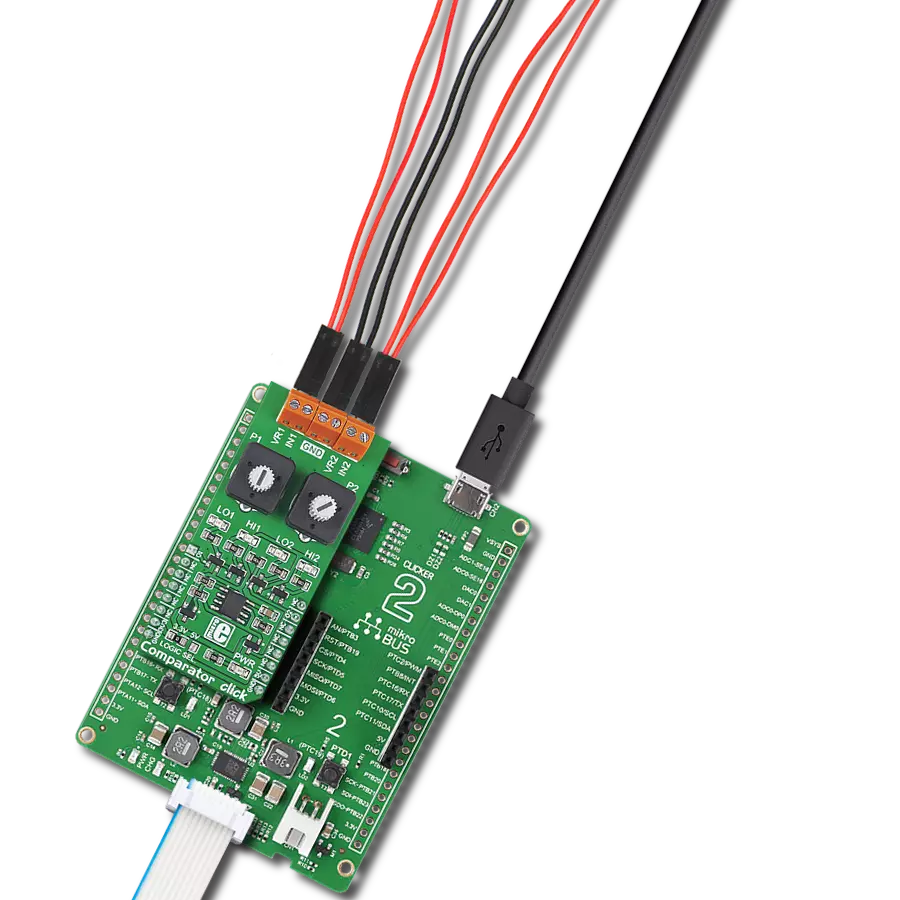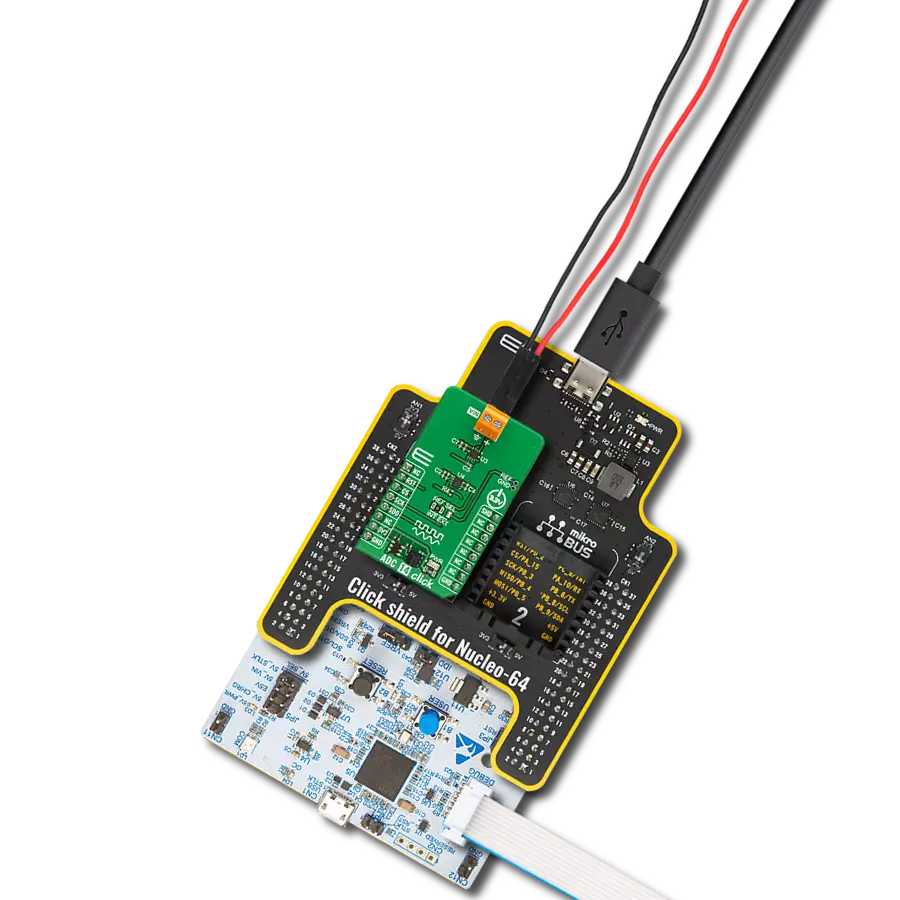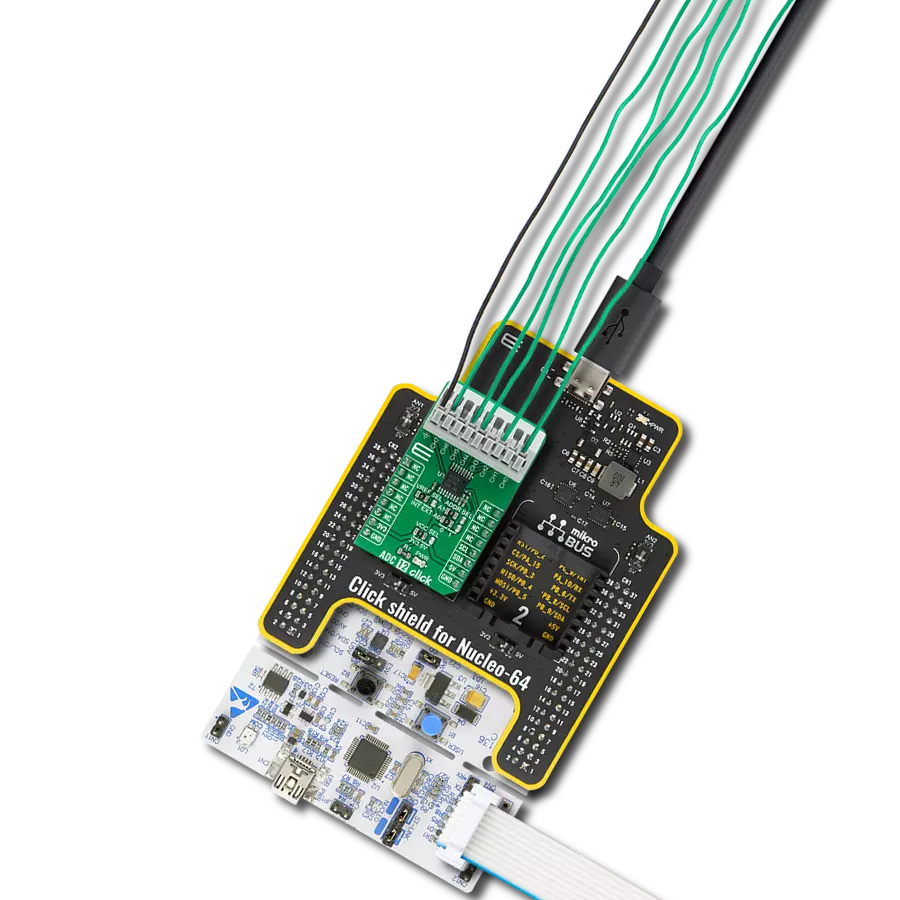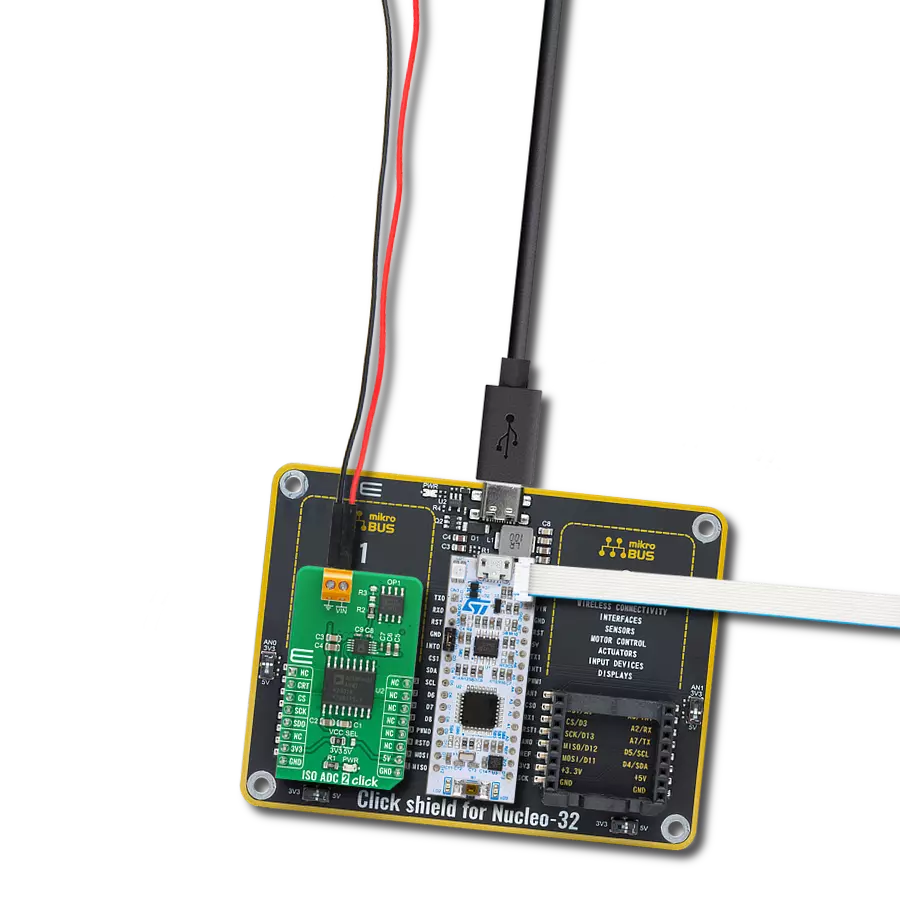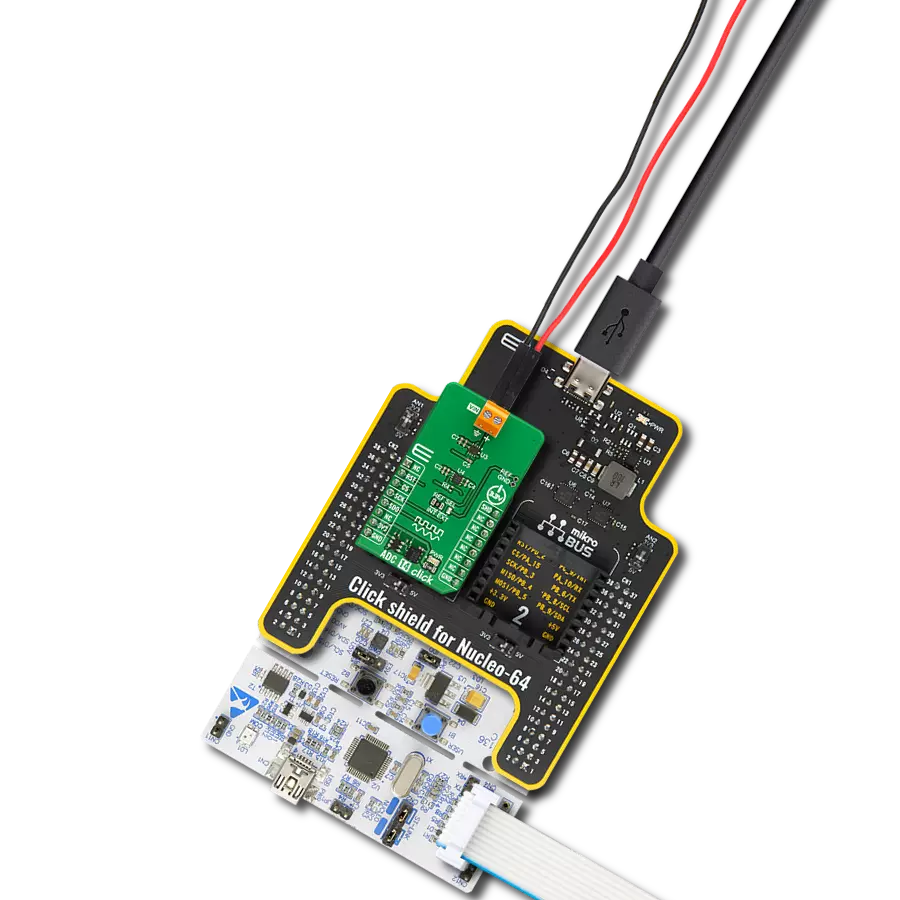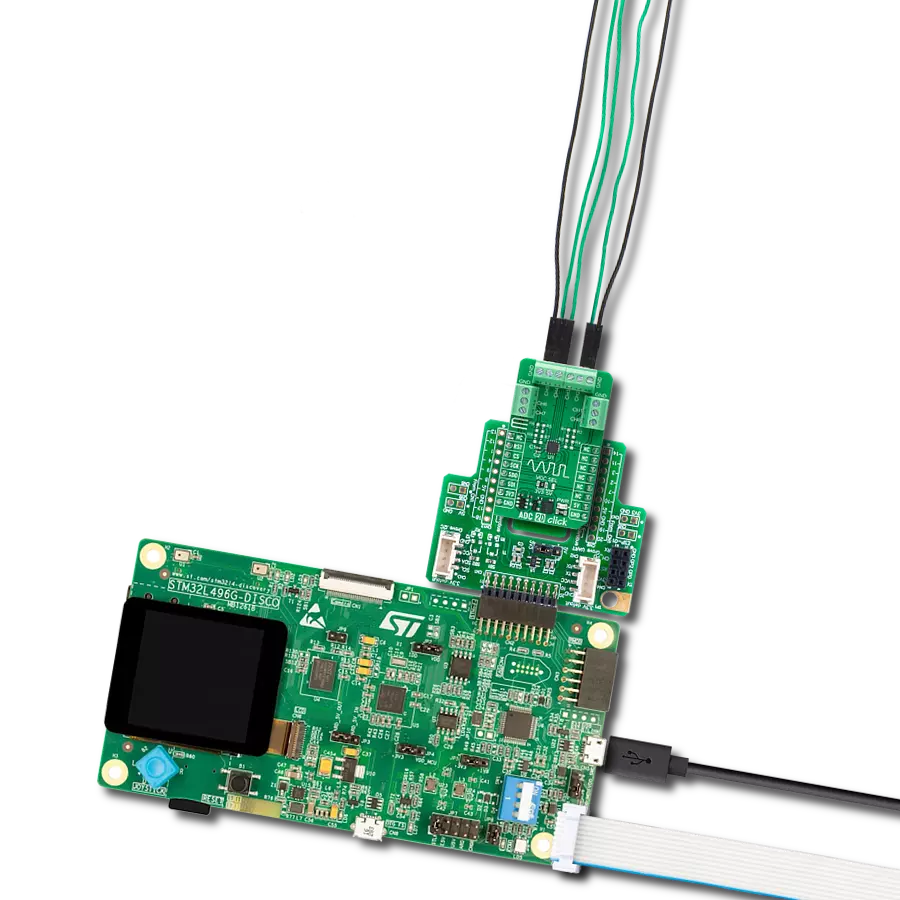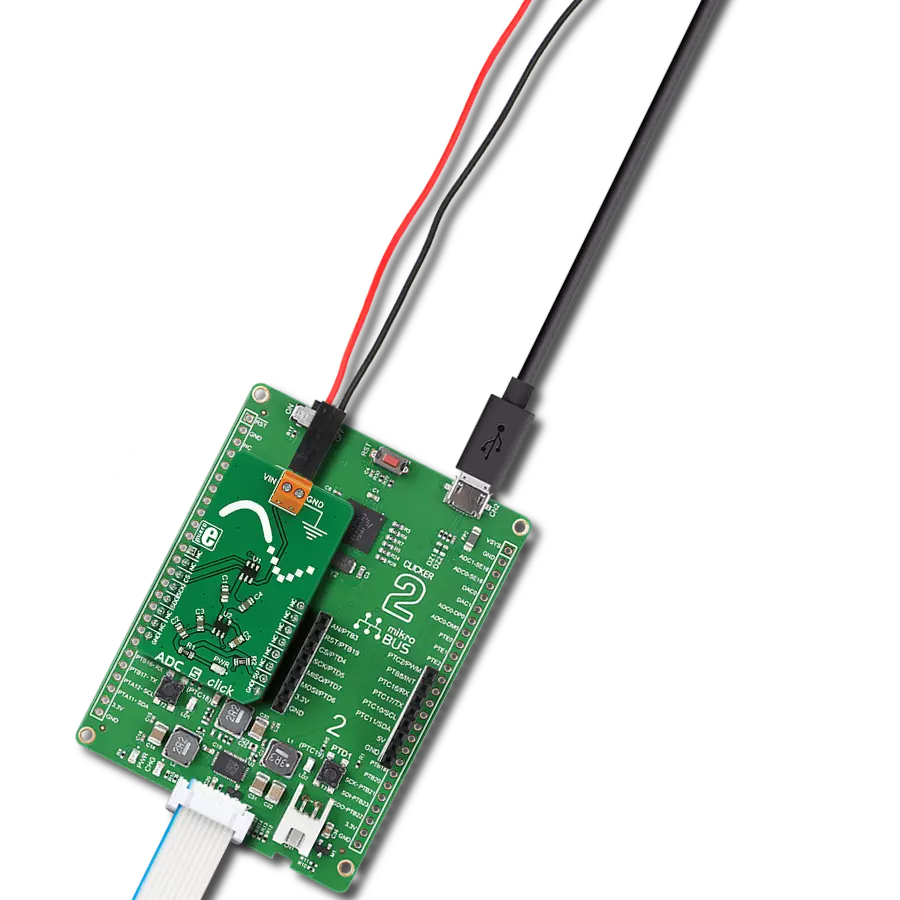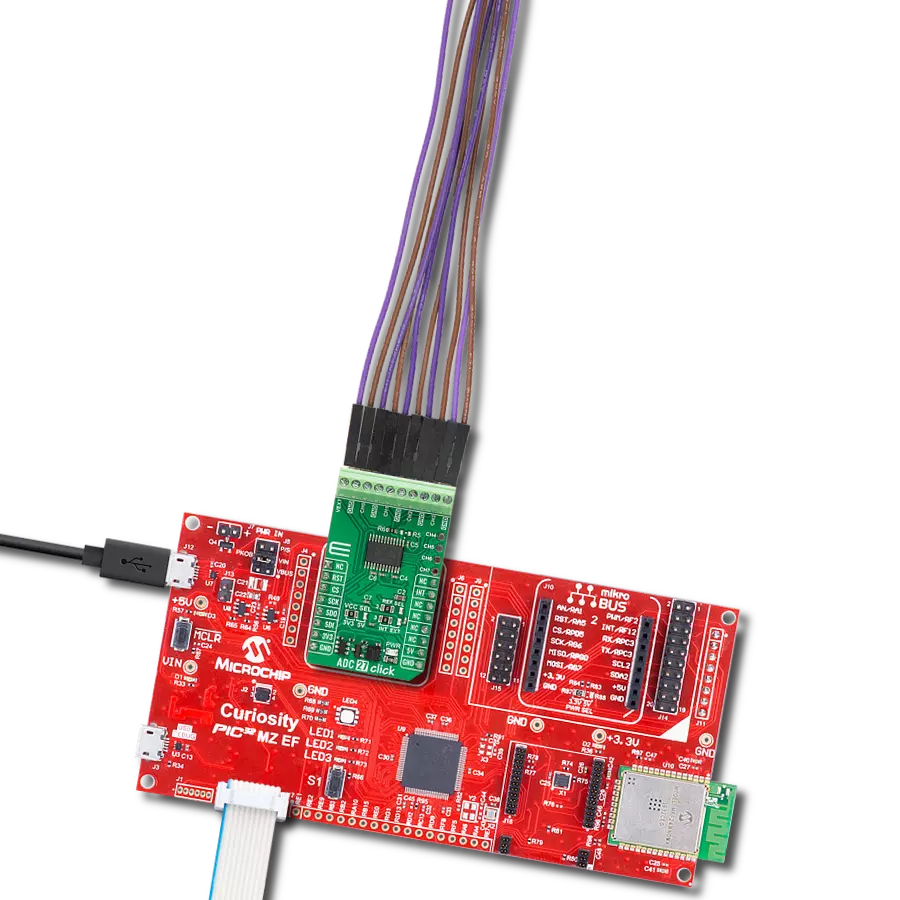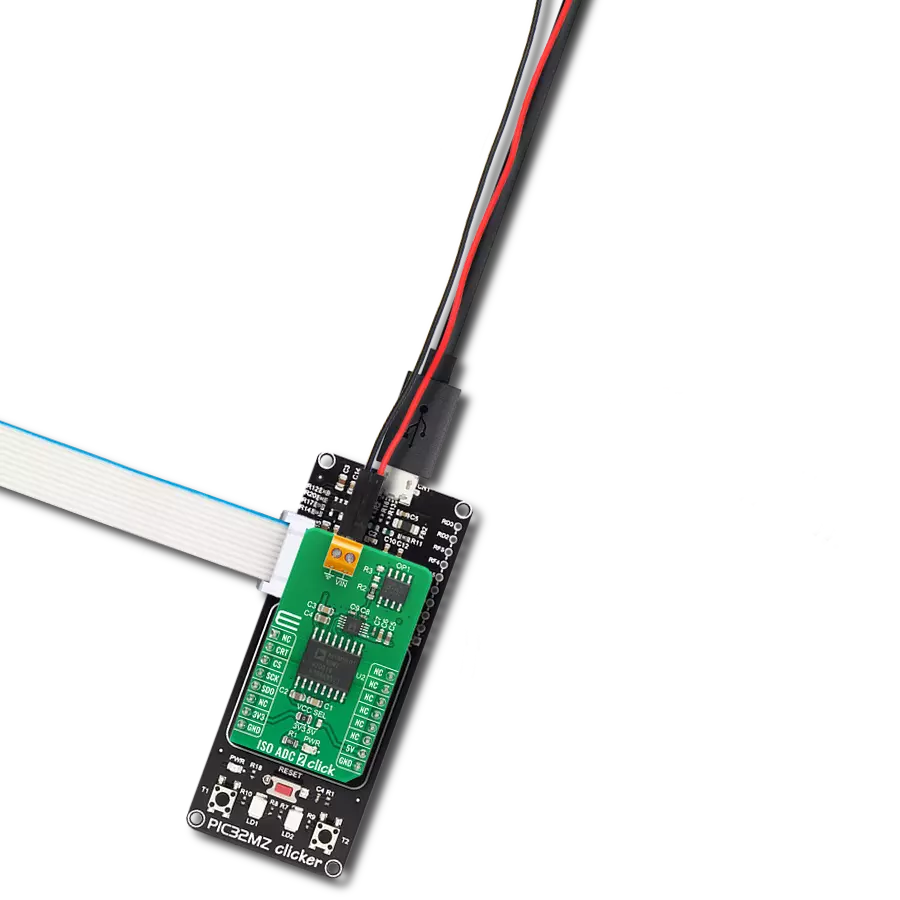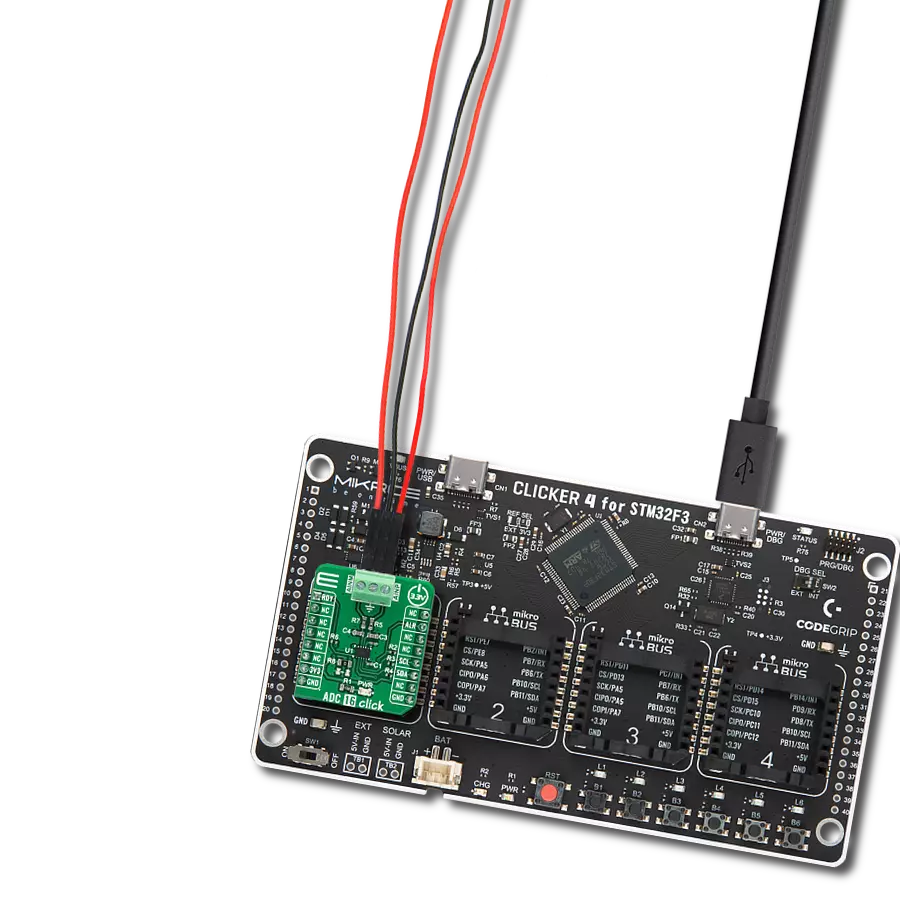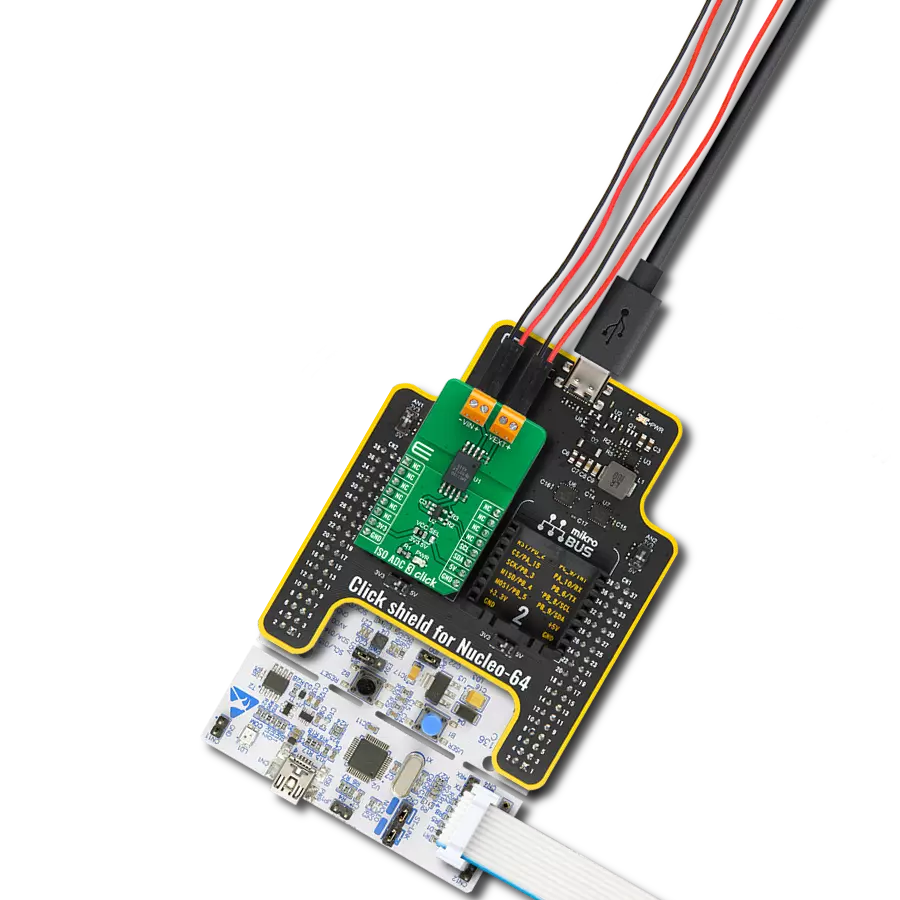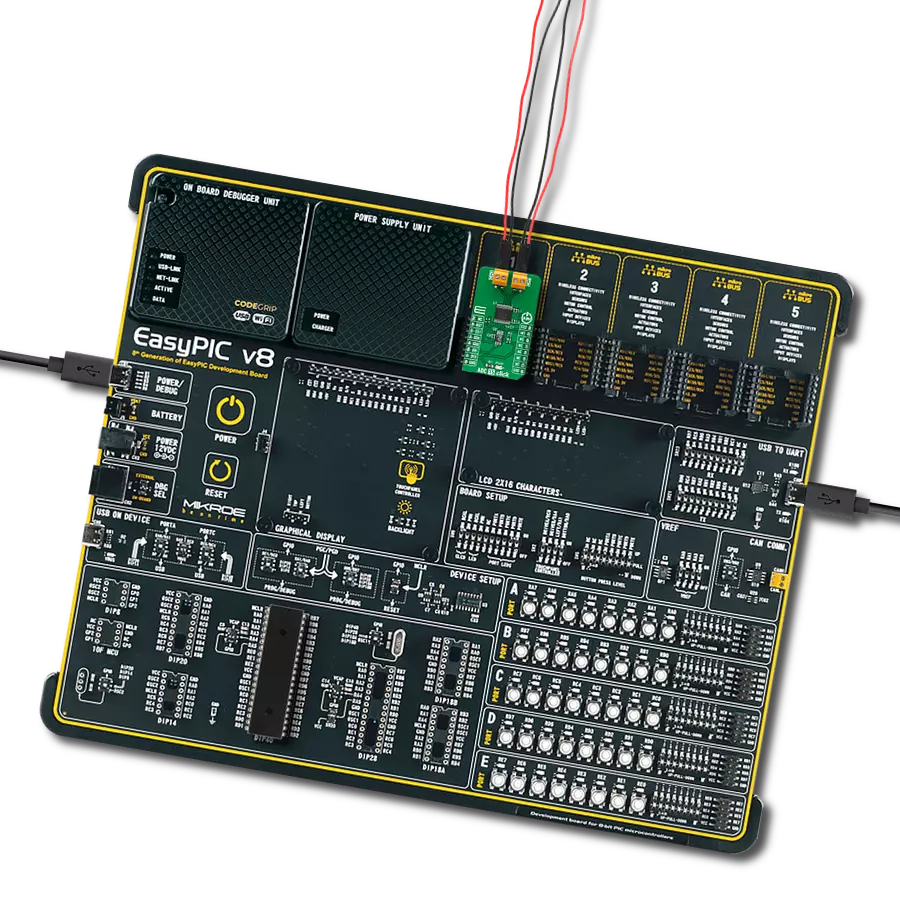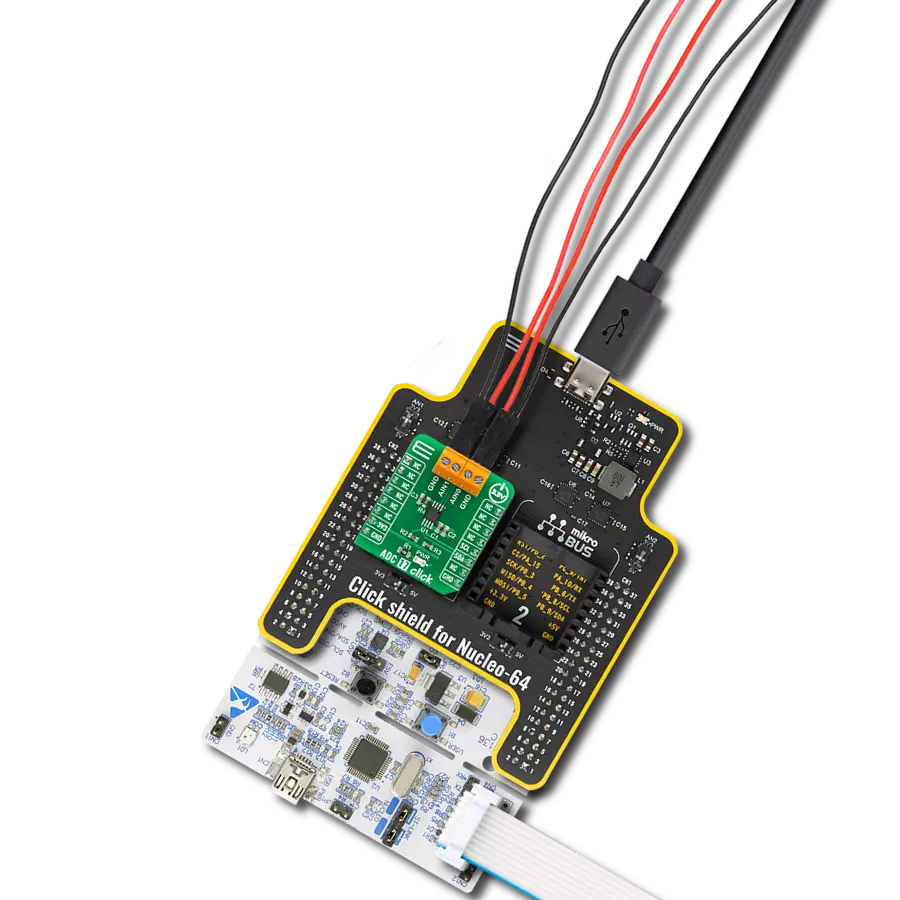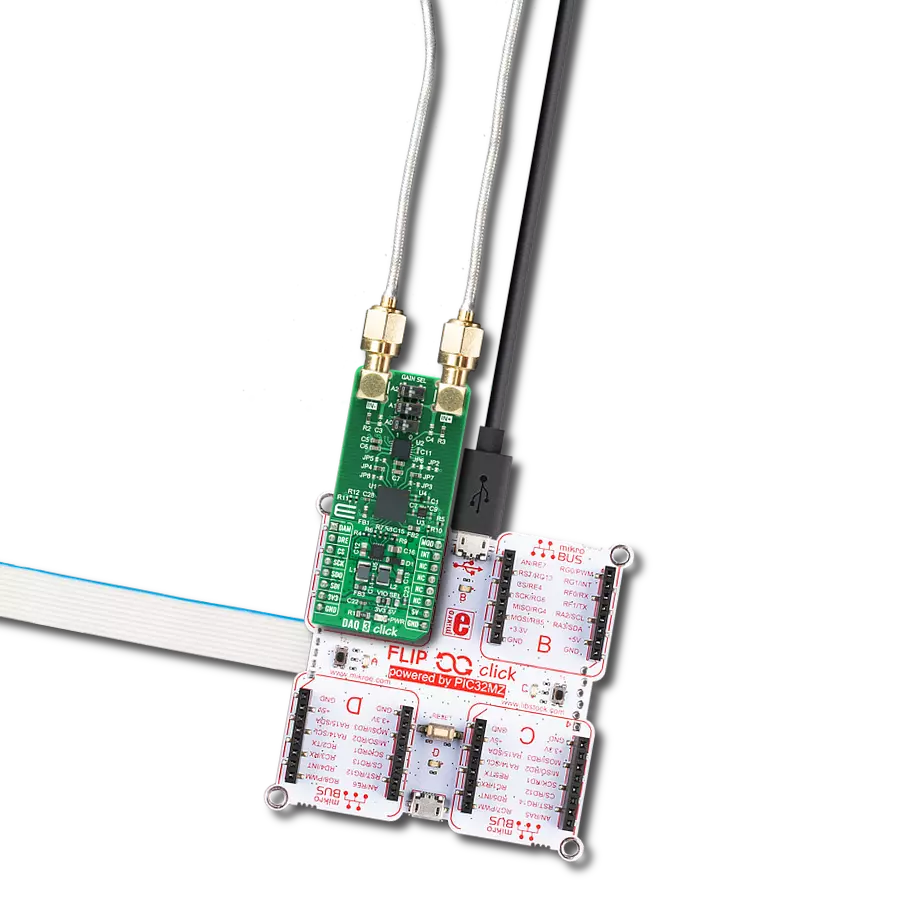Take control of your electrical systems with our comprehensive voltage comparison solution
A
A
Hardware Overview
How does it work?
Comparator Click is based on the LM2903, a dual differential comparator from ON Semiconductor. These two independent voltage comparators allow the comparison of voltages near ground potential and are compatible with all forms of logic. The LM2903 has a low current drain with low input bias current, low input offset current, and low offset voltage with ±1mV. Two potentiometers have high shafts allowing easy usage, but they can also be used with a flat screwdriver. The potentiometers
can be used in correlation with the VR (voltage reference) screw terminals to set the threshold values for comparison with the obtained values over the IN (input) screw terminals with the common ground (GND) screw terminals. Comparator Click communicates with the host microcontroller with each output using its own interrupt pin on the mikroBUS™ socket labeled O1 and O2. In addition, every independent output has its own red HIGH and green LOW LEDs for visual
presentation, labeled LO1, HI1, LO2, and HI2. This Click board™ can operate with either 3.3V or 5V logic voltage levels selected via the LOGIC SEL jumper. This way, both 3.3V and 5V capable MCUs can use the communication lines properly. However, the Click board™ comes equipped with a library containing easy-to-use functions and an example code that can be used, as a reference, for further development.
Features overview
Development board
Clicker 2 for Kinetis is a compact starter development board that brings the flexibility of add-on Click boards™ to your favorite microcontroller, making it a perfect starter kit for implementing your ideas. It comes with an onboard 32-bit ARM Cortex-M4F microcontroller, the MK64FN1M0VDC12 from NXP Semiconductors, two mikroBUS™ sockets for Click board™ connectivity, a USB connector, LED indicators, buttons, a JTAG programmer connector, and two 26-pin headers for interfacing with external electronics. Its compact design with clear and easily recognizable silkscreen markings allows you to build gadgets with unique functionalities and
features quickly. Each part of the Clicker 2 for Kinetis development kit contains the components necessary for the most efficient operation of the same board. In addition to the possibility of choosing the Clicker 2 for Kinetis programming method, using a USB HID mikroBootloader or an external mikroProg connector for Kinetis programmer, the Clicker 2 board also includes a clean and regulated power supply module for the development kit. It provides two ways of board-powering; through the USB Micro-B cable, where onboard voltage regulators provide the appropriate voltage levels to each component on the board, or
using a Li-Polymer battery via an onboard battery connector. All communication methods that mikroBUS™ itself supports are on this board, including the well-established mikroBUS™ socket, reset button, and several user-configurable buttons and LED indicators. Clicker 2 for Kinetis is an integral part of the Mikroe ecosystem, allowing you to create a new application in minutes. Natively supported by Mikroe software tools, it covers many aspects of prototyping thanks to a considerable number of different Click boards™ (over a thousand boards), the number of which is growing every day.
Microcontroller Overview
MCU Card / MCU
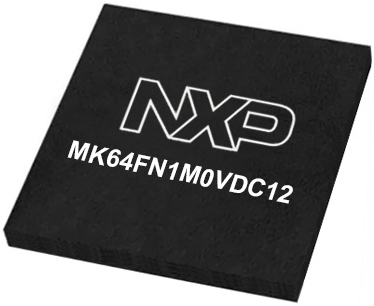
Architecture
ARM Cortex-M4
MCU Memory (KB)
1024
Silicon Vendor
NXP
Pin count
121
RAM (Bytes)
262144
Used MCU Pins
mikroBUS™ mapper
Take a closer look
Click board™ Schematic

Step by step
Project assembly
Software Support
Library Description
This library contains API for Comparator Click driver.
Key functions:
comparator_check_output_one- Check state of the OUT1 pin function.comparator_check_output_two- Check state of the OUT2 pin function.
Open Source
Code example
The complete application code and a ready-to-use project are available through the NECTO Studio Package Manager for direct installation in the NECTO Studio. The application code can also be found on the MIKROE GitHub account.
/*!
* \file
* \brief Comparator Click example
*
* # Description
* Comparator Click represents board equipped with two
* independent precise voltage comparators.
*
* The demo application is composed of two sections :
*
* ## Application Init
* Application Init performs Logger and Click initialization.
*
* ## Application Task
* Comparator Click checks state of the O1 and O2 pins.
* Results are being sent to the UART Terminal
* where you can track their changes.
* All data logs write on USB UART and changes for every 1 sec.
*
* \author Mihajlo Djordjevic
*
*/
// ------------------------------------------------------------------- INCLUDES
#include "board.h"
#include "log.h"
#include "comparator.h"
uint8_t out_state_one;
uint8_t out_state_two;
// ------------------------------------------------------------------ VARIABLES
static comparator_t comparator;
static log_t logger;
// ------------------------------------------------------ APPLICATION FUNCTIONS
void application_init ( void )
{
log_cfg_t log_cfg;
comparator_cfg_t cfg;
/**
* Logger initialization.
* Default baud rate: 115200
* Default log level: LOG_LEVEL_DEBUG
* @note If USB_UART_RX and USB_UART_TX
* are defined as HAL_PIN_NC, you will
* need to define them manually for log to work.
* See @b LOG_MAP_USB_UART macro definition for detailed explanation.
*/
LOG_MAP_USB_UART( log_cfg );
log_init( &logger, &log_cfg );
log_printf( &logger, "--------------------------\r\n" );
log_printf( &logger, " Application Init\r\n" );
Delay_ms ( 500 );
// Click initialization.
comparator_cfg_setup( &cfg );
COMPARATOR_MAP_MIKROBUS( cfg, MIKROBUS_1 );
comparator_init( &comparator, &cfg );
log_printf( &logger, "--------------------------\r\n" );
log_printf( &logger, " --- Comparator Click --- \r\n" );
log_printf( &logger, "--------------------------\r\n" );
Delay_ms ( 1000 );
log_printf( &logger, " -- Initialization done --\r\n" );
log_printf( &logger, "--------------------------\r\n" );
Delay_ms ( 1000 );
}
void application_task ( void )
{
out_state_one = comparator_check_output_one( &comparator );
out_state_two = comparator_check_output_two( &comparator );
log_printf( &logger, " Output One: \r\n" );
if ( out_state_one )
{
log_printf( &logger, " High \r\n" );
}
else
{
log_printf( &logger, " Low \r\n" );
}
Delay_ms ( 500 );
log_printf( &logger, " Output Two: \r\n" );
if ( out_state_two )
{
log_printf( &logger, " High \r\n" );
}
else
{
log_printf( &logger, " Low \r\n" );
}
Delay_ms ( 500 );
log_printf( &logger, "--------------------------\r\n" );
Delay_ms ( 1000 );
}
int main ( void )
{
/* Do not remove this line or clock might not be set correctly. */
#ifdef PREINIT_SUPPORTED
preinit();
#endif
application_init( );
for ( ; ; )
{
application_task( );
}
return 0;
}
// ------------------------------------------------------------------------ END
Additional Support
Resources
Category:ADC
